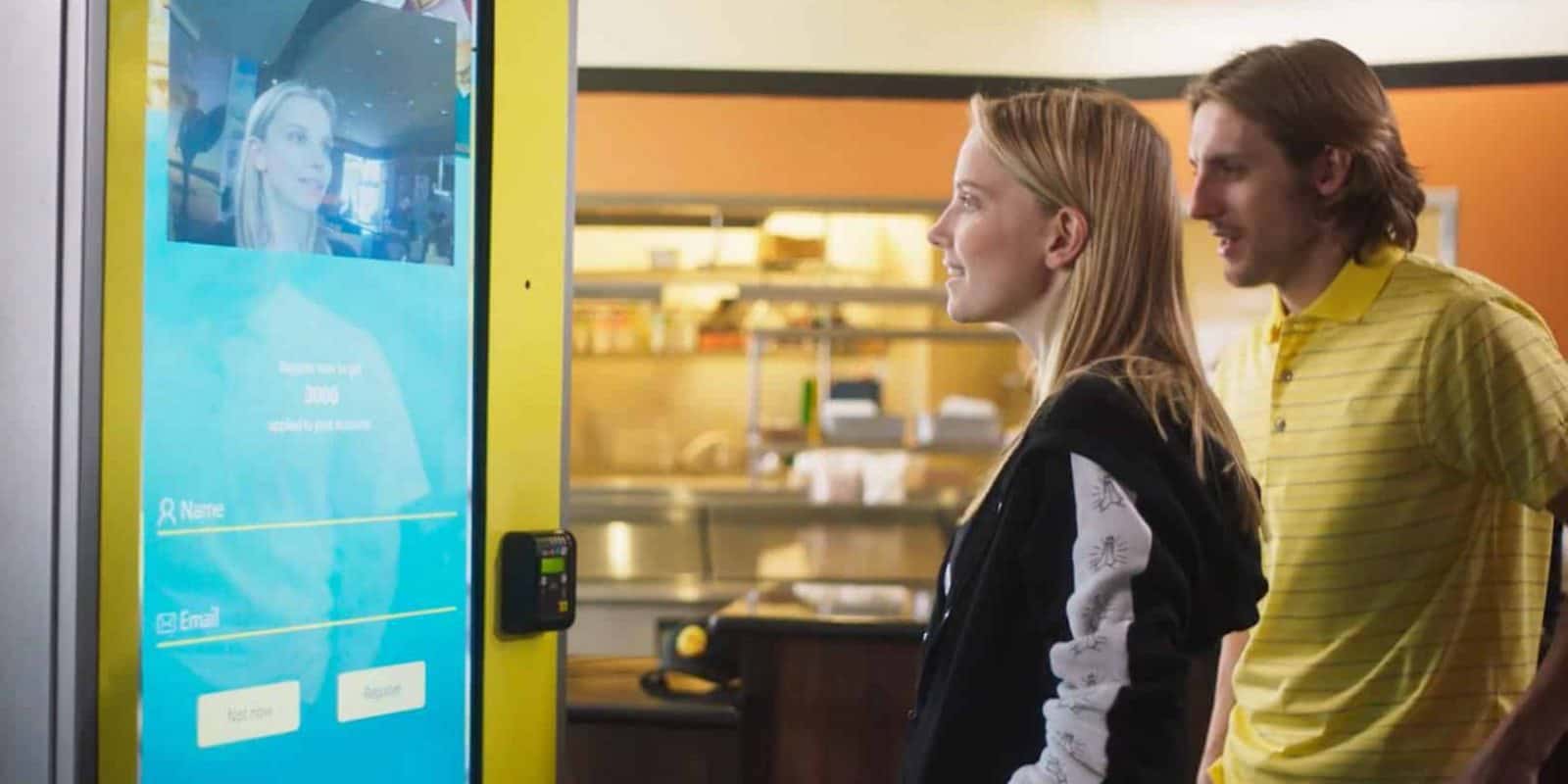
Forget the chip or magnetic stripe on your credit card. A restaurant in Southern California now can ring up credit card payments with facial recognition.
On Jan. 30, 2018, a CaliBurger restaurant in Pasadena, California, introduced a test program that lets you pay for a burger and fries by glancing at a self-service kiosk camera and punching in the credit card’s security code. With this technology, you won’t need to swipe your card at the kiosk.
A first for retailers
John Miller, chairman and CEO of Cali Group, the parent of CaliBurger as well as several tech companies, says in a news release: “To our knowledge, this is the first time in America that customers in a retail environment can pay without needing a physical or digital wallet.”
In December 2017, CaliBurger launched face-based ordering via a self-service kiosk at its Pasadena store for members of its loyalty program. Now, CaliBurger is extending face-activated access to credit card transactions at that location.
Rolling out the technology to other stores
CaliBurger’s face-based system requires a two-step authentication process. Aside from smiling at the camera, a customer must enter the CVV security code that appears on his or her credit card. That setup is only temporary, though. Eventually, CaliBurger plans to eliminate the need to enter the security code and rely only on facial recognition.
CaliBurger says that if customers respond positively to the new face-based ordering and payment experience in Pasadena, it will roll out the technology to its 35 other restaurants in the United States and 12 other countries.
NEC Corp. of America powers the technology behind CaliBurger’s self-service kiosks, which are equipped with artificial intelligence. The kiosks rely on NEC’s NeoFace facial recognition software to identify registered customers and pull up their account information and order preferences.
“Facial recognition is part of our broader strategy to enable the restaurant and retail industries to provide the same kinds of benefits and conveniences … that customers experience with retailers like Amazon in the digital world,” Miller says.
Facial recognition and privacy
CaliBurger says it doesn’t store images of customers who use the facial recognition kiosks.
“What is stored is a unique ‘digital fingerprint’ of the face itself and not any image or other identifiable information,” Miller told tech website Gizmodo via email.
He added that the kiosks are optional, so customers can pay for their meals the old-fashioned way if they’re creeped out by facial recognition.
“Privacy is our top concern,” Miller concluded, “and CaliGroup does not sell or lease data to third parties.”
Last September, Woodrow Hartzog, professor of law and computer science at Northeastern University, shared his concerns with Gizmodo about facial recognition technology like CaliBurger’s.
“In short, facial biometrics are dangerous because there are few rules regulating their collection, use and dissemination, even though they are capable of causing real harm,” Hartzog said. “If a database of faceprints were compromised, it would have a ripple effect on authentication systems that used the faceprint, as well as possibly allow unauthorized parties to make use of the faceprint for surveillance.”
Let’s face it: Facial recognition is here to stay, and debate will continue to heat up — just like a CaliBurger patty — over its use for credit card purchases and so many other purposes.
